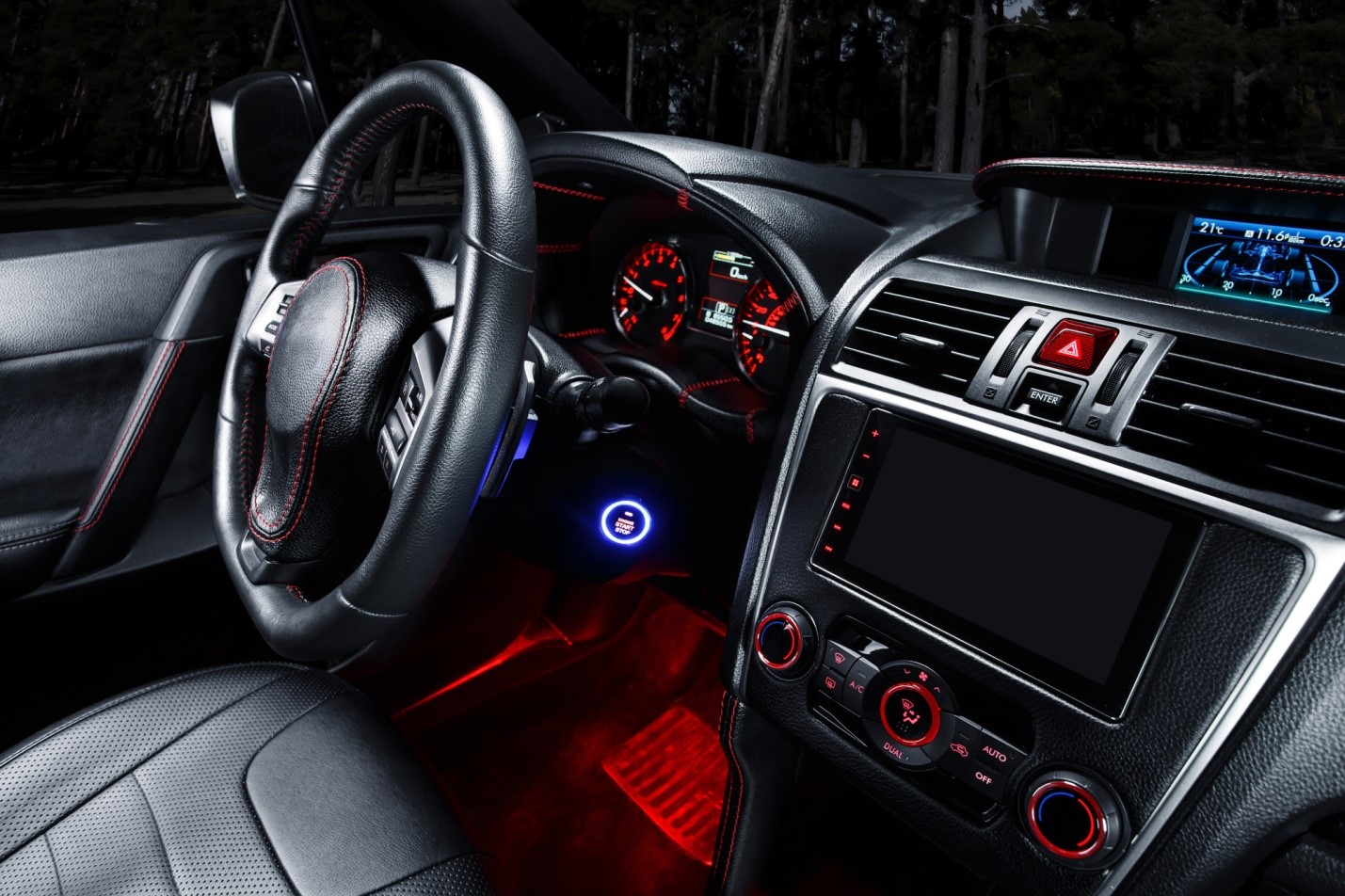Most refrigerators and walk-ins seem virtually indestructible and problem free, but you’ll get longer life out of yours by following these safety and maintenance tips. Clean the door gaskets and hinges regularly. The door gaskets, made of rubber, can rot more easily if they are caked with food or grime, which weakens their sealing properties. They can be safely cleaned with a solution of baking soda and warm water. Hinges can be rubbed with a bit of petroleum jelly to keep them working well. Dirty coils force the refrigerator to run hotter, which shortens the life of the compressor motor. They should be cleaned every 90 days, preferably with an industrial-strength vacuum cleaner.
Walk-in floors can be damp-mopped but should never be hosed out. Too much water can get into the seals between the floor panels and damage the insulation. A refrigerator only works as well as the air that’s allowed to circulate around its contents. Cramming food containers together so there’s not a spare inch of space around them doesn’t help. Also try to keep containers (especially cardboard ones) from touching the walls of the cabinet. They may freeze and stick to the walls, damaging both product and wall. Use a good rotation system: First in, first out (FIFO) is preferable. Or put colored dots on food packages, a different color for each day of the week, so everyone in your kitchen knows how long each item has been in the fridge.
WALK-IN COOLERS AND FREEZERS
A walk-in cooler is just what its name implies: a cooler big enough to walk into. It can be as small as a closet or as large as a good-size room, but its primary purpose is to provide refrigerated storage for large quantities of food in a central area. Experts suggest that your operation needs a walk-in when its refrigeration needs exceed 80 cubic feet, or if you serve more than 250 meals per day. Once again, you’ll need to determine how much you need to store, what sizes of containers the storage space must accommodate, and the maximum quantity of goods you’ll want to have on hand. The only way to use walk-in space wisely is to equip it with shelves, organized in sections. Exactly how much square footage do you need? The easiest formula is to calculate 1 to 1.5 cubic feet of walk-in storage for every meal you serve per day. Another basic calculation: Take the total number of linear feet of shelving you’ve decided you will need (A), and divide it by the number of shelves (B) you can put in each section.
This will give you the number of linear feet per section (C). To this number (C), add 40 to 50 percent (1.40 or 1.50) to cover “overflow”-volume increases, wasted space, and bulky items or loose product. This will give you an estimate of the total linear footage (D) needed. However, linear footage is not enough. Because shelves are three dimensional, you must calculate square footage. So multiply (D) by the depth of each shelf (E) to obtain the total square footage amount (F). Finally, double the (F) figure, to compensate for aisle space. Roughly half of walk-in cooler space is aisle space. Another popular formula is to calculate that, for every 28 to 30 pounds of food you’ll store, you will need 1 cubic foot of space. When you get that figure, multiply it by 2.5. (The factor 2.5 means only 40 percent of your walk-in will be used as storage space; the other 60 percent is aisles and space between products.)
The result is the size of the refrigerated storage area you will need. For a walk-in freezer, simply divide your walk-in refrigerator space by two. Larger kitchens, which serve more than 400 meals a day, may need as many as three walk-in refrigerators for different temperature needs: one for produce (41 degrees Fahrenheit), one for meats and fish (33 to 38 degrees Fahrenheit), and one for dairy products (32 to 41 degrees Fahrenheit). The walk-in is used most often to store bulk foods. Because this often means wheeling carts or dollies in and out, the floor should be level with the kitchen floor.
This leveling is achieved by the use of strips (called screeds) that are applied to the floor. Coolers don’t come as a single unit; they are constructed on-site. The walls, ceilings, and floors are made of individual panels. Wall panels should be insulated to a rating of R-30, which means a 4-inch thickness. They come in various lengths and widths, with 12-by-12-inch corner panels at 90-degree angles. They can be as short as 71?2 feet or as tall as 131?2 feet. The most common type of insulation inside the panels is polyurethane, and the outside walls of the panels can be made of stainless steel, vinyl, or aluminum. Stainless steel is the most expensive, and aluminum-because it’s the least expensive-is the most popular choice. If the walk-in is an outdoor installation, aluminum is the most weather resistant.
The installer will be sure the unit has interior lighting. The floor panels for walk-ins are similar to the wall panels. Load capacities of 600 pounds per square foot are the norm, but if you plan to store very heavy items (like beer kegs), a reinforced floor can be purchased with a load capacity of up to 1000 pounds per square foot. The refrigeration system of a walk-in is a more complex installation than a standard refrigerator, primarily because it’s so much bigger. Matching the system (and its power requirements) with the dimensions of the walk-in and its projected use is best left to professionals, but it’s important to note that a walk-in accessed frequently throughout the day will require a compressor with greater horsepower to maintain its interior temperature than one that is accessed seldom.
A 9-foot-square walk-in would need at least a 2-horsepower compressor. The condenser unit is located either on top of the walk-in (directly above the evaporator) or up to 25 feet away, with lines connecting it to the walk-in. The latter, for obvious reasons, is known as a remote system, and is necessary for larger-than-normal condensing units with capacities of up to 7.5 horsepower. In a remote system, the refrigerant must be added at the time of installation. For smaller walk-ins, there’s also a plumbing configuration called a quick-couple system, which is shipped from the factory fully charged with refrigerant. This definitely simplifies installation. However, you may need the added power of a remote system if your kitchen has any of these drains on the walk-in’s cooling ability: frequent door opening, glass display doors, multiple doors per compartment, or an ambient kitchen temperature that’s near 90 degrees Fahrenheit.
Modern walk-ins sometimes offer a frozen-food section in addition to the regular cooler space. There are pros and cons to this concept. It may ease the load on the freezer, because it’s already located inside a chilled airspace; but it also can’t help but reduce overall usable space, because it requires a separate door. You can also order your walk-in with a separate, reach-in section that has its own door and shelves. Although this may save the cost of purchasing a separate reach-in, some critics claim that a walk-in is not designed to do a reach-in job, such as storing uncovered desserts. Do you really want them in the same environment as cartons of lettuce and other bulk storage items? There may be cleanliness or food quality factors to consider.
The doors should open out, not into the cooler itself. The standard door opening is 34 by 78 inches. Several door features are important for proper walk-in operation. These include: A heavy-duty door closer. Self-closing, cam-lift door hinges. If the door can be opened past a 90-degree angle, the cam will hold it open. A heavy-duty stainless steel threshold. This is installed over the galvanized channel of the door frame. A pull-type door handle, with both a cylinder door lock and room to use a separate padlock if necessary. Pressure-sensitive vents, which prevent vacuum buildup when opening and closing the door. An interior safety release so no one can be (accidentally or otherwise) locked inside the cooler.
Other smart features that can be ordered for walk-ins are: A thermometer (designed for outdoor use, but mounted inside the cooler) with a range of 40 to 60 degrees Fahrenheit. A monitoring and recording system that keeps a printout of refrigeration temperature or downloads to a computer. Glass, full-length door panels (like those in supermarkets and convenience stores), sometimes called merchandising doors, either hinged or sliding. Heavy-duty plastic strip curtains inside the door. (One manufacturer claims a 40 percent energy savings with this feature.)
A foot treadle, which enables you to open the door by pressing on a pedal or lever with your foot when both hands are full. Three-way interior lighting, which can be turned on from outside or inside the cooler, with a light-on indicator light outside. Inside, the light itself should be a vapor-proof bulb with an unbreakable globe and shield. When space is at a premium, think about whether it is practical to install an outdoor walk-in unit. This is an economical way to add space without increasing the size of your kitchen, and you can purchase ready-to-use, stand-alone structures with electricity and refrigeration systems in place. They come in standard sizes from 8 to 12 feet wide and up to 50 feet in length, in 1-foot increments.
They range in height from 7.5 to 9.5 feet. Look for a unit with a slanted, weatherproof roof, a weather hood, and a fully insulated floor. Outdoor walk-ins cost about half of the price of installing an indoor kitchen walk-in, so this is a money-saving idea if it works in your location. If your demands for walk-in space are seasonal, consider leasing a refrigerated trailer, available in most metropolitan areas on a weekly or monthly basis. They can provide an instant 2000 cubic feet of additional storage space, which can be kept at any temperature from 40 to 80 degrees Fahrenheit. They use basic 60-amp, 230-volt, three-phase electricity. Ask if the lease agreement includes hookup at your site and service if anything goes wrong.











